

|
| UNITED STATES OF AMERICA | |
| PENNSYLVANIA | |
| Philadelphia County |
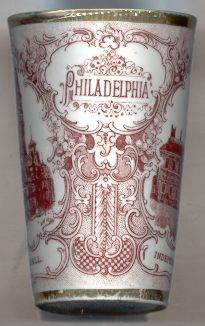
|
Philadelphia is the fifth most populous city in the United States and the largest city in Pennsylvania, both in area and population.
Since The Act of Consolidation in 1854, the city has been coterminous with Philadelphia County. Since 1952, the city and the county have shared a common government,
yet the county still exists as a separate entity within Pennsylvania. Philadelphia has a population of about 1,470,000 (2004); the Philadelphia metropolitan area
has a population of about 6.2 million.
Before Europeans arrived, the Delaware (Lenape) Indian town of Shackamaxon was located where Philadelphia now stands, specifically, the Germantown neighbourhood. Although the area was within the bounds described in the 1632 Charter of Maryland, the Calvert family's actual reach never came this far, and Swedish colonists became the first Europeans to settle the area, calling it Wiccacoa. Philadelphia is a planned city founded and developed in 1681 by William Penn, a Quaker. The city's name means "city of brotherly love" in Greek (Φιλαδελφια). Philadelphia was a major center of the independence movement during the American Revolutionary War. The Declaration of Independence and US Constitution were drafted in Philadelphia and signed in the city's Independence Hall. In 1790 the seat of the United States Government was moved from Federal Hall in New York to Congress Hall in Philadelphia before taking its current residence in Washington, DC in 1800. In 1876 Philadelphia hosted the World's Fair, known as the Centennial Exposition, and in 1926 the city held the Sesquicentennial Exposition to celebrate the nation's 150th birthday. In 1976, Philadelphia was one of the participating cities in the United States Bicentennial observances that took place nationwide. [Text adapted from http://en.wikipedia.org/wiki/Philadelphia] 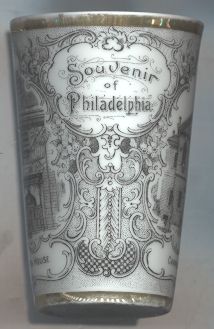
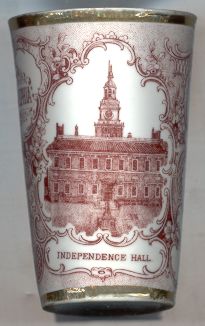
|
Independence Hall is pictured on the back of the U.S. $100 bill, as well as the Kennedy half dollar. It is now part of Independence National Historical Park, administered by the National Park Service, and since 1979 is listed as a World Heritage Site by UNESCO (see also list of other UNESCO heritage sites). [Text adapted from http://en.wikipedia.org/wiki/Independence_Hall]
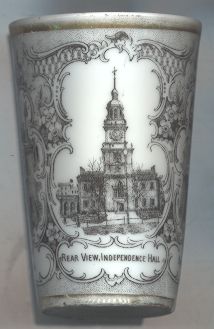

|
The was originally cast in 1752 by the Whitechapel Bell Foundry, for use in the Pennsylvania State House and had been ordered the previous year by the Pennsylvania Assembly. Its cast inscription from Leviticus 25:10 states, "Proclaim Liberty throughout all the land unto all the inhabitants thereof", possibly to mark the 50th anniversary of William Penn's Charter of Privileges of 1701. The bell was not officially known as the "Liberty Bell" until 1837, when it became a symbol of the abolitionist movement. The bell received its first crack in March 1753, the first time it was rung. After its initial cracking, the bell was recast. When the tone of the recast bell proved unsatisfactory, it was recast again, and this third bell was hung in the steeple of the State House in June 1753. It remained in the tower through the start of the American Revolutionary War, when the Second Continental Congress used the building for its deliberations in 1775 to 1776. In October 1777, however, as the Revolutionary War intensified and the British attempted to seize Philadelphia, the Liberty Bell was moved north, to the Pennsylvania village of Northamptontown (now known as Allentown). In Allentown, the bell was hidden under the floor of Old Zion Reformed Church, where it remained until the British evacuated Philadelphia in 1778, when it was again returned to Philadelphia. It is not agreed upon when the second crack appeared (the first after the recastings), but it is agreed that it grew to its present size on February 22, 1846, in honor of George Washington's Birthday. The bell was repaired in February 1846 (before the extension of the crack). The method of repair, known as stop drilling, required drilling along the hairline crack so that the sides of the fracture would not reverberate. When the bell was rung that month the crack extended from the top of the repaired crack to the crown of the bell, rendering the bell unusable. From the 1880s through the early decades of the 20th century, the Liberty Bell traveled to numerous cities and was displayed at expositions and world's fairs. For many years, the bell was housed in the stairwell of Independence Hall where visitors could view it while touring the historic building. In the 20th century the bell was on display at different locations. As of 2005, the bell remains in the northeast corner of 6th and Chestnut Streets in Philadelphia. Independence Hall is located directly across the street. A bit of trivia: On April 1, 1996, the fast food restaurant chain Taco Bell took out a full-page advertisement in The New York Times announcing that they had purchased the bell to "reduce the country's debt" and renamed it to "the Taco Liberty Bell." Thousands of people who did not immediately get the April Fool's Day hoax protested. [Text adapted from http://en.wikipedia.org/wiki/Liberty_Bell]
|
|
|
By 1772 they had leased their second floor to Benjamin Franklin for his library company, the first lending library in the colonies. In 1774, the hall became the meeting place of the First Continental Congress. During the Revolutionary war the hall was used by both sides as a field hospital. In subsequent years the building served as Customs House, a bank, hosted the country's first trade exhibition and was an auction hall. Set humbly back from Chestnut Street, the Hall has been continuously owned and operated by The Carpenters' Company of the City and County of Philadelphia, the oldest trade guild in America, since 1770. Today it is also part of Independence National Historical Park and welcomes over 150,000 world-wide visitors per year. [Text adapted from http://www.tryphilly.com/carp.htm, http://www.ushistory.org/carpentershall/] 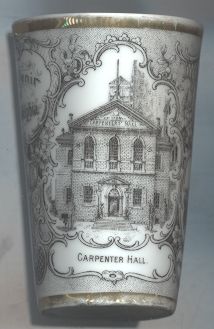
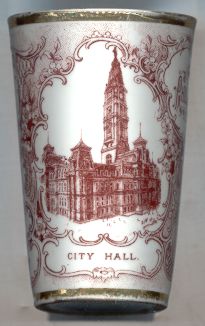
|
Originally designed to be the world's tallest building, by the time it was completed it was already surpassed by the Washington Monument in Washington, DC, and the Eiffel Tower in Paris. For much of its history, City Hall was the tallest building in Philadelphia, thanks to a "gentlemen's agreement". In 1987, it lost that distinction when One Liberty Place was completed. City Hall is a National Historic Landmark. [Text adapted from http://en.wikipedia.org/wiki/Philadelphia_City_Hall]
|
|
|
Betsy Ross (1752–1836) was a courageous and spirited woman whose life was filled with hardships. She was shunned by her family and forbidden to worship as a Quaker for marrying a man of a different faith. She was widowed three times, and two of her seven daughters died as infants. Faced with these adversities, Betsy managed to prevail as an industrious businesswoman, running her own upholstery shop at a time when women were not given the same opportunities as men. Betsy often amused her children and grandchildren by recounting the story of how she made the first Stars and Stripes. For nearly a century, the story of Betsy Ross and the making of the first flag was known only by her family. It wasn’t until 1870 that the nation was first introduced to her story. According to the story, General George Washington and two members of the Continental Congress walked through the door of her upholstery shop in 1776. Well aware of the significance of their visit, Betsy led her guests to the privacy of her parlor. Here, the men disclosed the reason for their visit—they wanted Betsy to make a flag for the new nation. Betsy explained that she had never made a flag before, but she would be willing to try. The men presented her with a sketch of the proposed flag. She studied the drawing and noticed that there were six-pointed stars in the design. Betsy suggested that the stars should have five points, but the gentlemen protested, claiming that a great many of these flags must be made very quickly and a five-pointed star would be too difficult to make. With that, Betsy folded a piece of paper and with just one snip of her scissors she revealed a perfect five-pointed star. The men were impressed with her skill and agreed to change the design. It was a flag of this design that flew when the Declaration of Independence was read aloud at Independence Hall on July 8, 1776. On June 14, 1777, Congress passed the Flag Resolution which stated: "Resolved, That the flag of the United States be made of thirteen stripes, alternate red and white; that the union be thirteen stars, white in a blue field, representing a new Constellation", making the Stars and Stripes the official flag of the United States. [Text adapted from http://www.fieldtrip.com/pa/56275343.htm, http://www.betsyrosshouse.org/, http://en.wikipedia.org/wiki/Flag_of_the_United_States, http://en.wikipedia.org/wiki/Betsy_Ross] 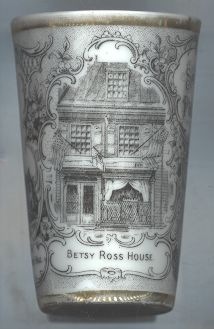
|
![[scale]](lineal.jpg)